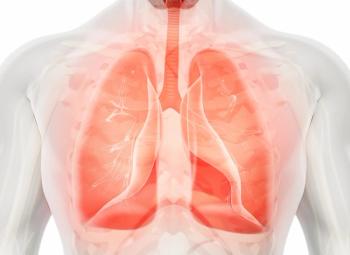
Miami Breast Cancer Conference® Abstracts Supplement
- 42nd Annual Miami Breast Cancer Conference® - Abstracts
- Volume 39
- Issue 4
- Pages: 24-25
TPS 43 ADELA: A Double-Blind, Placebo-Controlled, Randomized Phase 3 Trial of Elacestrant + Everolimus vs Elacestrant + Placebo in ER+/HER2– Advanced Breast Cancer Patients With ESR1-Mutated Tumors Progressing on Endocrine Therapy
Background
ET plus CDK4/6 inhibitor (CDK4/6i) is the standard of care (SOC) in first-line estrogen receptor–positive/HER2-negative (ER+/HER2–) advanced breast cancer; however, tumors eventually develop resistance. Constitutive activation in PI3K/AKT/mTOR pathway can contribute to endocrine resistance in breast cancer. The ESR1 mutation is a common type of acquired resistance that emerges in 40% to 50% of patients in the metastatic setting after prolonged aromatase inhibitor exposure. There is an unmet need for novel therapeutic approaches to overcome resistance mechanisms and improve outcomes in patients with ER+/HER2– advanced breast cancer with ESR1-mutated tumors progressing after ET plus CDK4/6i. Elacestrant is a next-generation oral SERD that binds to ER-alpha, inducing its degradation. In the phase 3 EMERALD study (NCT03778931), elacestrant improved progression-free survival (PFS) vs SOC ET in patients with ESR1-mutated tumors (HR, 0.55; 95% CI, 0.39-0.77; P = .0005). Differences were notable among patients who received prior ET plus CDK4/6i 12 months or more; median PFS with elacestrant was 8.6 months vs 1.9 months with SOC ET (HR, 0.41; 95% CI, 0.26-0.63). Crosstalk between ER and PI3K/AKT/mTOR pathways provides a rationale for evaluating elacestrantwith everolimus (an mTORC1 inhibitor). The phase 3 ADELA study (NCT06382948) compares elacestrant plus everolimus vs. elacestrant plus placebo in patients with ER+/HER2– advanced breast cancer with ESR1-mutated tumors progressing on ET plus CDK4/6i.
Materials and Methods
ADELA is an international, multicenter, double-blind, placebo-controlled phase 3 trial. Eligible patients are adults (>18 years) with ER+/HER2– advanced breast cancer with ESR1-mutated tumors, previously treated with 1 to 2 lines of ET for advanced breast cancer, and evidence of disease progression on prior ET plus CDK4/6i for advanced after 6 months or more. Patients receiving CDK4/6i-based adjuvant therapy are eligible (disease progression must be confirmed after 12 months or more of treatment but less than 12 months following CDK4/6i completion). Other criteria include adequate organ function and ECOG performance status of 0 to 1. Exclusion criteria include prior chemotherapy for advanced breast cancer and active uncontrolled/symptomatic brain metastasis. Patients will be randomized 1:1 to 28-day cycles of elacestrant at 345 mg plus everolimus at 7.5 mg by mouth or elacestrant at 345 mg plus placebo by mouth until disease progression or unacceptable toxicity, based on dose determined in phase 1/2 ELEVATE trial (NCT05563220). Patients will receive dexamethasone mouthwash during the first 8 weeks. Stratification factors are the presence of visceral metastases (yes vs no) and duration of prior CDK4/6i (≥12 months vs <12 months). The primary objective will evaluate BIRC-based PFS.Secondary end points included investigator-assessed PFS, overall survival, overall response rate, clinical benefit rate, duration of response, time to response, the best percentage change in tumor burden, safety, and health-related quality of life.
Status
Planned enrollment is 240 patients; recruitment is ongoing.
Articles in this issue
Newsletter
Stay up to date on recent advances in the multidisciplinary approach to cancer.


















































































